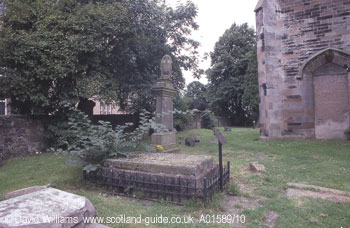The crowns of Scotland and England were united in 1603 and in the decades that followed the attempts by the British monarchy to impose its religious ideas on the country were violently opposed and resulted in terrible bloodshed (see picture). During these `Covenanting Times` (named after the various documents called the National Covenants), Glasgow took measures to defend itself and the inhabitants were ordered to carry guns and be prepared to counter any attack by government troops. While these matters of state and religion provided an almost never-ending series of disputes and panics, Glasgow`s growth and subsequent overcrowding led to other crises. In 1652 a serious fire destroyed eighty tenement `closes` (the shared entrance doorways in a building) and after another fire in the 1670s the council gave notice that stone, not timber, should be used for the exterior walls of new buildings. Diseases took their toll too, and the bubonic plague caused many deaths in 1574, 1584-5, 1605-06 and 1646-7.
By 1660 the city`s population had reached 14,678 and many were involved
in trading with European countries such as Ireland, France, Holland and
Norway. Apart from importing iron, wood, salt and beef and exporting goods
such as coal, malt, barley and clothes, ships were used to carry re-exported
goods to other countries such as Irish tallow to France. The importance
of this trade was that it laid the basis for the city`s subsequent role
as a world-wide shipper. However, at this stage of Glasgow`s trading activities,
there were few exports of locally-produced items as manufacturing was
yet to become important to the city. Trade brought prosperity to Glasgow
and in 1656 Thomas Tucker reported to Oliver Cromwell that this town,
seated in a pleasant and fruitful soil, and consisting of four streets
handsomely built in form of a cross, is one of the most considerable burghs
of Scotland, as well for the structure as trade of it.
This article is based on the guidebook "The Glasgow Guide".
